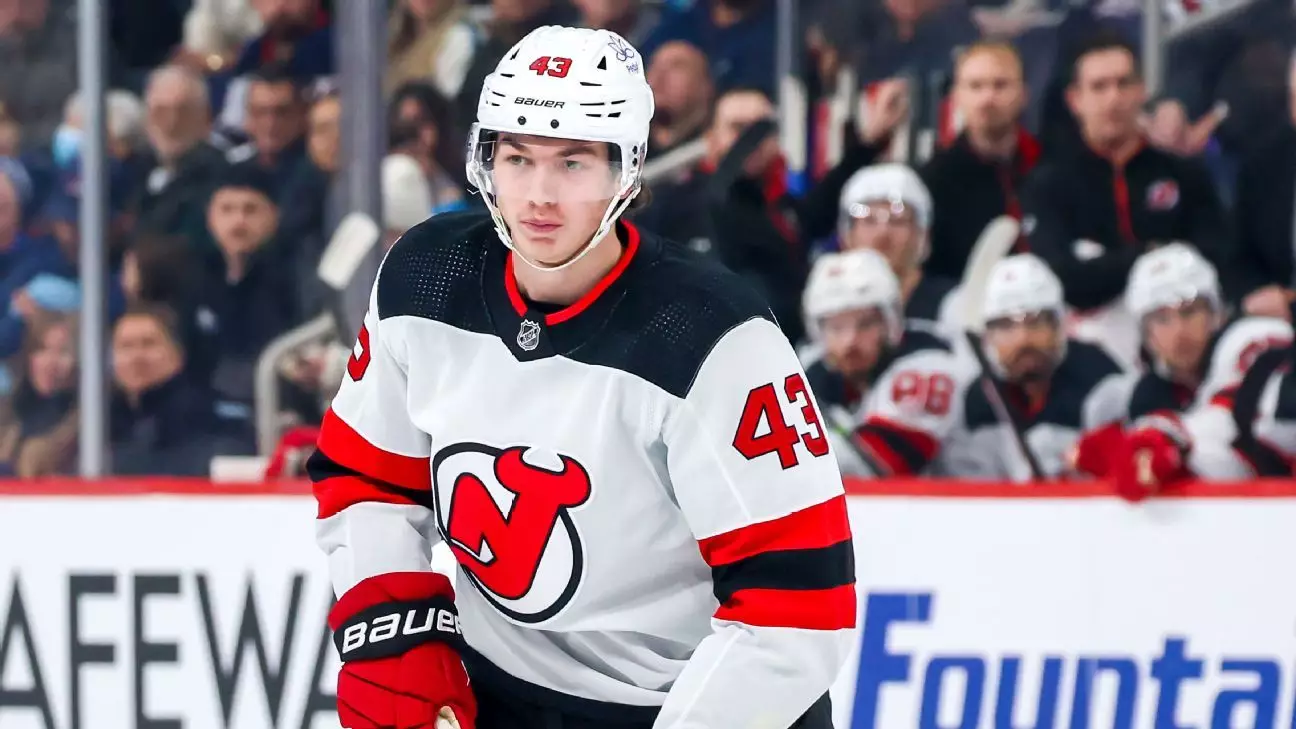In a significant setback for the New Jersey Devils, rising star Luke Hughes has been sidelined due to a left shoulder injury sustained during offseason training. Initial medical evaluations indicated that surgery would not be necessary, but the timeline for recovery extends to six to eight weeks. The implications of this injury resonate deeply within the team, as Hughes had emerged as a pivotal player in the Devils’ strategy following an impressive rookie season. Missing the preseason games and the opening pair against the Buffalo Sabres in Prague means that the team will have to navigate the initial stages of the season without one of its most promising assets.
The scheduled timeline suggests that Hughes could potentially step back onto the ice in mid-October, but by then, the team will have already engaged in multiple regular-season matches. This absence could disrupt not only the team’s defensive structure but also their rhythm and cohesiveness as they seek to build upon last year’s success.
Hughes’ rookie campaign was a testament to his formidable talent, as he finished with an impressive tally of six goals and 47 points over a full 82-game season. His performance earned him a third-place finish in Calder Trophy voting, solidifying his status among the league’s elite rookies alongside Connor Bedard and Brock Faber. Both Hughes and Faber demonstrated exceptional endurance by participating in every regular-season game, a rare feat that underscored their commitment and capabilities.
However, with Hughes sidelined, the Devils lose a significant contributor on both ends of the ice. His ability to generate offense from the blue line and his understanding of the game at such a young age were key facets of the Devils’ playoff contention strategy. As the Devils vie for success in the upcoming season, his return will be crucial in maintaining their competitiveness.
In the absence of Hughes, the Devils must strategize to fill the void left by his injury. This situation also presents an opportunity for other team members to step up. The team may need to adjust defensive pairings and implement a rotation that maximizes the strengths of the players available. Depth becomes paramount, as the Devils aim to keep their playoff ambitions intact during Hughes’ rehabilitation period.
Moreover, the Devils will have to manage the expectations of fans and analysts alike. Following an impressive 52-win season last year and a remarkable playoff run, the franchise is under pressure to not only maintain that momentum but build upon it. Hughes’ injury acts as a stark reminder of the unpredictability that often accompanies a hockey season, and how quickly team dynamics can alter.
As Hughes heals, fans and teammates alike will be eagerly anticipating his return. His potential to impact the game is significant, and once he is fully fit, he is expected to resume his integral role in the lineup. The combination of skill and hockey IQ that Hughes brings is irreplaceable, and it could very well dictate the trajectory of the Devils this season.
In the bigger picture, Hughes represents the future of the franchise, particularly as the Devils look to build a sustainable competitive roster. His connections within the game, especially through his family ties to the sport, only underscore his influence and growth potential in the league. Given the Devils’ commitment to fostering young talent, Hughes’ development trajectory will be a critical focal point as the organization aims to construct a championship-caliber team.
While Hughes’ injury is undoubtedly a setback, it also opens the door for other players to rise to the occasion. With careful management and strategic adjustments, the Devils can hope to weather this storm and emerge stronger when Hughes returns to the ice. As the days draw closer to his expected return, the anticipation builds not just for his recovery but for what he can accomplish in a season that promises to be filled with challenges and opportunities.


Leave a Reply